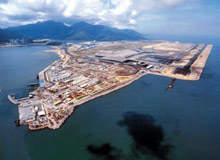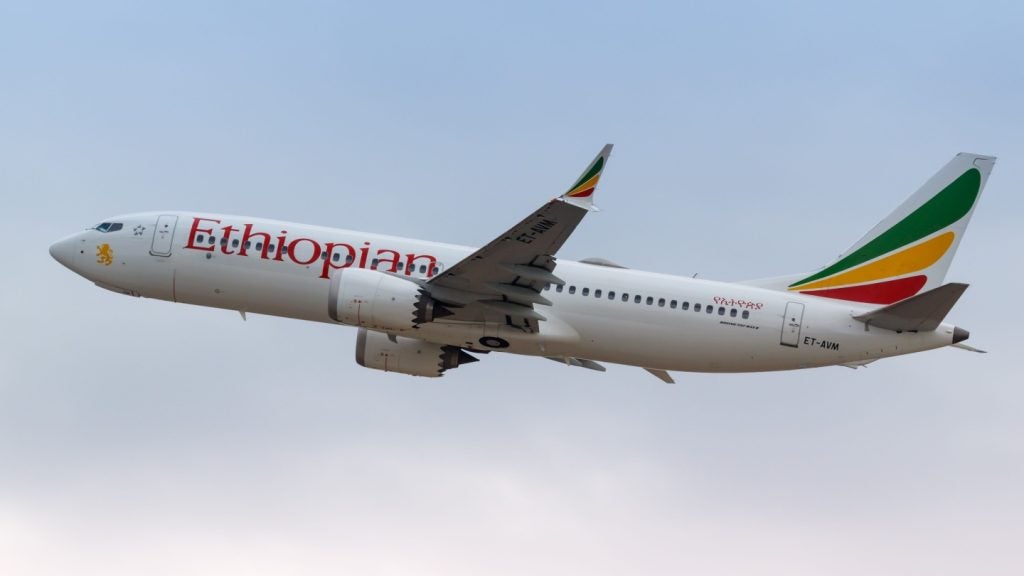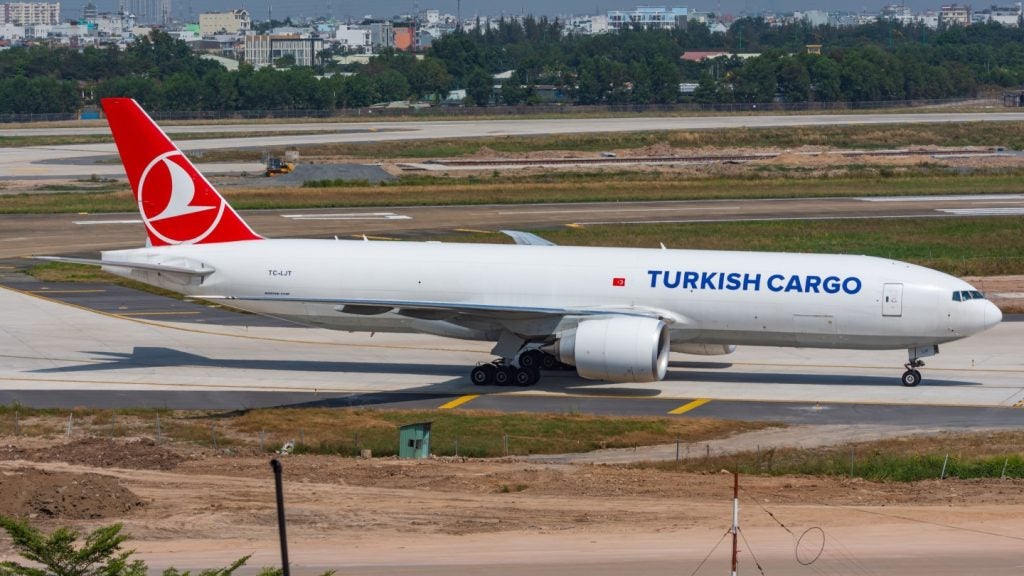
Hong Kong’s Chek Lap Kok Airport (CLK) is located on partly reclaimed land adjacent to Lantau Island, whose rugged terrain has a maximum elevation of nearly 1000m. Consequently, aircraft operating at the new airport may be affected by significant terrain-induced windshear and turbulence under certain meteorological conditions. In order to enhance safety and operational efficiency at the airport, a windshear and turbulence warning system (WTWS) was installed and tested, and has been operational since the airport opened.
The 44-month project was under the sponsorship of the Hong Kong Observatory. The WTWS development team included Women in Technology International (WITI), the National Center for Atmospheric Research (NCAR), Hong Kong University of Science and Technology (HKUST), and the University of Wyoming.
The project was composed of basic and applied research on wind flow over Hong Kong’s terrain, a scientific field study, warning system concept and feasibility studies, system design, development, testing, implementation and training. The WTWS provides real-time hazardous weather information to air traffic controllers and pilots to enhance safety in the terminal area and improve predictions of hazardous weather to support strategic decision making by air traffic managers.
EARLY STUDIES
Prior to the development of the windshear warning system, several studies were conducted in Hong Kong to gain insight into the meteorological conditions near the location of the new airport. These studies included analysis of routine weather observations, special observing programmes and meteorological modelling of the differences between the existing Kai Tak Airport and CLK.
Variables that were analysed included wind direction and speed, temperature, clouds, visibility, rainfall, thunderstorms and fog. Methods used to conduct these studies included investigative flights by light aircraft and water tank and wind tunnel experiments.
How well do you really know your competitors?
Access the most comprehensive Company Profiles on the market, powered by GlobalData. Save hours of research. Gain competitive edge.

Thank you!
Your download email will arrive shortly
Not ready to buy yet? Download a free sample
We are confident about the unique quality of our Company Profiles. However, we want you to make the most beneficial decision for your business, so we offer a free sample that you can download by submitting the below form
By GlobalDataThe probability of significant turbulence and windshear at CLK during specific meteorological conditions prompted the Hong Kong government to create the WTWS programme. It was designed to investigate the detailed wind flow environment near the airport site and, based on the scientific results, build and implement an operational windshear and turbulence warning and forecasting system.
FIRST STAGES
One of the first programme tasks was to perform a meteorological review and analysis of historical Hong Kong data. An initial report included a review of scientific theory on airflow around complex terrain, analysis and identification of the conditions which could cause terrain-induced windshear and turbulence near CLK, numerical experiments aimed at gaining additional insight into conditions that produce windshear caused by terrain, and an estimate of the timing and location of significant windshear at the new airport.
That review indicated that the primary parameters for determining the nature of the airflow include wind direction and speed, stability, and the presence of critical levels. These parameters were further studied by performing small-scale modelling simulations using the Clark model of a wide range of atmospheric phenomena such as downslope winds, gravity waves and wave amplification, which are often associated with terrain-induced windflow perturbations.
Preliminary results indicated that both mechanical and gravity-wave processes contribute to windshear and turbulence and confirmed that the intensity and location of the turbulence are sensitive, among other things, to wind direction, speed and stability.
A study of test flight results indicated that terrain-induced windshear and turbulence was not related to a single weather phenomenon and could be expected at any time of year. The atmosphere during the turbulence events was variable, although wind speed appeared to have a dominant role in determining intensity. Using ten years of data, it was found that significant episodes of terrain-induced windshear and turbulence could last from a period of several hours up to a number of days since they were governed by long-term atmospheric motions.
Principal phenomena likely to affect aircraft operations at CLK include crosswinds, longitudinal windshear, large wind changes, turbulence, updrafts and downdrafts. It was unclear which condition, if any, would dominate.
FIELD EXPERIMENT
Using the knowledge gained from preparing the first meteorological report and from other sources, WITI designed a field experiment to understand fine-scale windflow in the vicinity of CLK.
The basic objectives of the experiment, which was conducted between March 1994 and September 1995, were to quantify the frequency and severity of turbulence and windshear; define more clearly the meteorological conditions under which significant terrain-induced windshear and turbulence occur; validate airflow predictions made by the small-scale model; determine the elements necessary to develop the windshear warning system; and collect verification data.
The major observational platforms used in the field experiment included a King Air research aircraft operated by the US National Center for Atmospheric Research, a scanning Doppler light detection and ranging (lidar) device, integrated sounding system, wind profiler and a network of surface weather stations. Digital flight data from Cathay Pacific B-747-400s operating at Hong Kong were also collected.
FINDINGS
Principal findings of the second meteorological report generally supported the conclusions of previous studies. It indicated that moderate to severe terrain-induced turbulence occurs in the vicinity of CLK and that it is more frequent than terrain-induced windshear. Turbulence is found almost exclusively in a well-defined region in the wake of the surrounding terrain. Ambient wind speed determines the magnitude of this turbulence, whereas ambient wind direction governs location. Other factors, such as stability, affect the wind flow response but are secondary.
Both mechanical and gravity-wave processes appear to be important in the dynamics and the net response of both processes appears to be quasi-linear and similar. There is no indication of resonance or unusual responses. Significant terrain-induced windshear and turbulence will occur in episodes that are typically several days in duration and separated by several weeks.
The wealth of scientific information provided by the field study was used in the design of the WTWS system. Coupled with feedback from controllers, pilots and aviation meteorologists, this information was used to develop an operational concept for the new alerting system.
WARNING SYSTEM
Designers developed the WTWS products to enhance the safety, capacity and efficiency of operations at CLK by automatically providing pilots with concise windshear and turbulence alerts. The system was also designed to provide air traffic managers and supervisors with information to aid effective decision-making and to present high-resolution, real-time meteorological data and forecast guidance to forecasters.
The WTWS integrates data from various sensors and sources, including anemometers, Doppler weather radar, Doppler wind profilers, numerical weather prediction models and an array of global weather observations. Indirectly, it receives data from the ICAO world area forecast system (WAFS) and the World Meteorological Organization (WMO) global telecommunications system.
To enhance flexibility, the system was designed to run on commercially available Unix platforms. Modular system software, written in the C and Fortran programming languages, was designed to conform to international standards, allowing WTWS to run on vendor-neutral platforms. To heighten reliability, a redundant array of independent computers environment was employed. This ensures that all critical system processes are running somewhere on a network of WTWS computers.
The capability to refine or tune system algorithms after, as well as before, installation is an important feature because optimisation can be achieved only after it is used in an operational environment. The system also includes provisions for accommodation of new types of data, such as realtime aircraft and lidar data, after initial deployment.
An advanced version of the mesoscale model (MM5) developed by Penn State University and NCAR is used to predict atmospheric conditions around the new airport. The MM5 modelling system was adapted to provide real-time, short-range prediction of the mesoscale atmospheric conditions conducive to terrain-induced windshear and turbulence.
Although the MM5 produces weather guidance for the entire Hong Kong region, airport-specific forecasts are generated with a post-processing algorithm. Similar to model output statistics (MOS) techniques commonly used at major forecast centres, this algorithm provides 12-hour forecasts with 30-minute resolution of wind and turbulence at CLK.
The WTWS algorithms, many of which utilise an analysis technique known as ‘fuzzy logic’, produce turbulence and windshear products based on sensor data. This technique makes use of disparate data types and keeps important information throughout the decision process, maximising algorithm performance.
Sensor inputs include automatic weather stations, TDWR, and an aerodrome meteorological observing system – and each is used by specific windshear and turbulence detection algorithms. The weather product algorithms are used to produce gridded information, which is integrated using decision algorithms. By employing such a scheme, a new turbulence or wind shear algorithm can be added to the system by tailoring its output to a standardised format.
SAFETY FOR CLK
The WTWS is the first system in the world to provide real-time alerts of terrain-induced turbulence and alerts for both convective and terrain-induced windshear. It also provides predictions of turbulence caused by terrain and airport surface wind as well as numerical weather prediction guidance. For detection of convective windshear, the WTWS relies partly on the output from a terminal Doppler weather radar (TDWR) at Tai Lam Chung, about 12km from CLK.
The windshear warning system processes TDWR data including gust front, precipitation intensity, and storm motion, providing an integrated alert system. It generates graphics and text designed for easy interpretation by pilots, controllers, traffic managers and aviation forecasters. It also interfaces with other airport systems, reaching a broader user community, including airport authority staff and airline offices.







